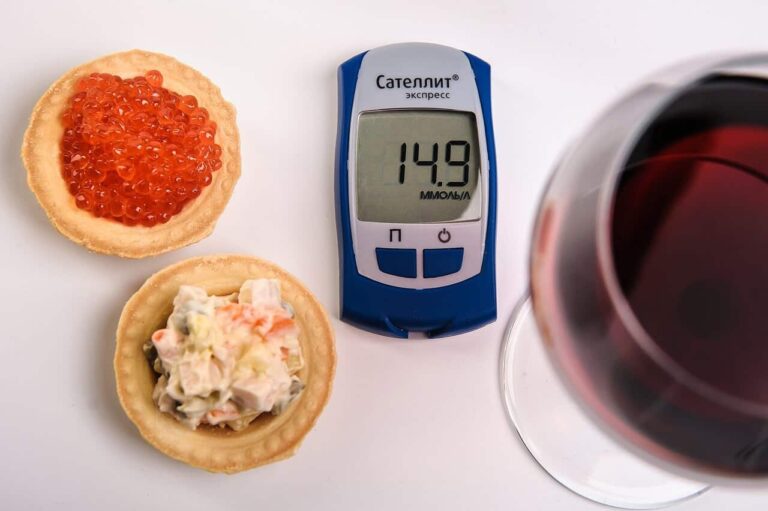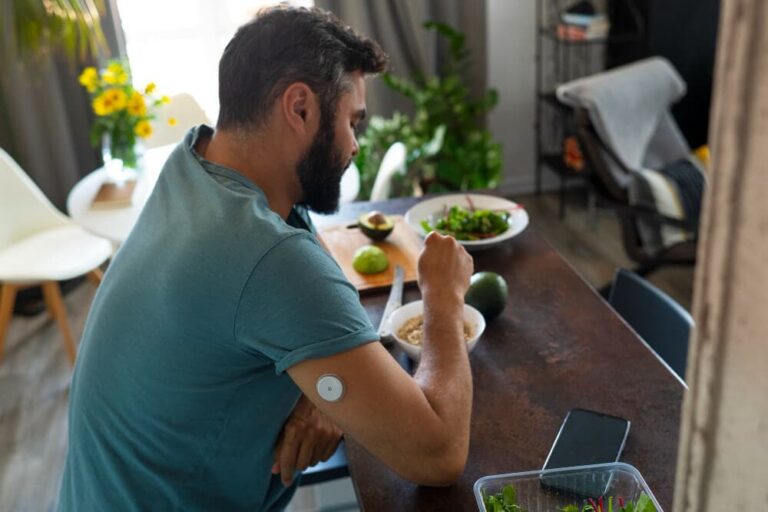Living with Type 1 Diabetes (T1D) can feel like juggling flaming swords while riding a unicycle. At night. In a thunderstorm. Sounds a bit dramatic? Maybe. But if you’ve ever had to whip out a calculator to count carbs at a friend’s dinner party or been jolted awake by a buzzing CGM alert at 3 a.m., you know exactly what I mean. It’s a relentless, 24/7 mental balancing act.
This reality often leads to the one question that echoes in the mind of every newly diagnosed person, and even seasoned veterans on a bad day: Can you actually live a normal life with Type 1 Diabetes?
Short answer: Yes. Absolutely.
Long answer? It’s a different kind of normal. A more intentional one. Grab a snack (preferably one you’ve pre-bolused for) and let’s break down what that really means.
🧬 First, Let’s Get Real: What is “Normal,” Anyway?
Before we go any further, we need to dismantle the word “normal.” If your definition of normal is living completely on impulse—eating whatever you want without a second thought, skipping meals on a whim, or generally ignoring your body’s signals—then nope, that version of normal checked out the day your pancreas retired.
But let’s be honest, is that truly a healthy “normal” for anyone?
If, however, “normal” means building a career, traveling the world, falling in love, starting a family, running marathons, launching a business, or binge-watching an entire season of a show while snacking on popcorn… then yes. A thousand times, yes.
The secret is that T1D forces you into a relationship with your body that most people never experience. It demands attention, respect, and a level of self-awareness that can be, ironically, a superpower. You’re not just living; you’re living with intention.
🔄 The Unseen Labor: What Daily T1D Management Really Looks Like
Let’s not sugarcoat it (pun intended). The “yes” comes with a significant “but.” Living a full life with T1D is possible because of the constant, often invisible, work happening in the background. It’s like a second, unpaid full-time job where you are the CEO, employee, and entire HR department.
The daily realities include:
- Constant Monitoring: Whether it’s glancing at a CGM on your phone 100 times a day or the ritual of old-school finger pricks, you are always collecting data.
- Insulin Dosing: You become a part-time mathematician and pharmacist, calculating insulin-to-carb ratios, correction factors, and timing your doses for meals via pump or pens.
- Carb Counting: Every meal becomes a math problem. You learn to eyeball the carbs in a slice of pizza or weigh your morning oats. Hello, trusty food scale! [Type 1 Diabetes Nutrition]
- Predictive Analysis: You’re not just managing the now; you’re predicting the future. “If I go for a walk in an hour, how will that affect the insulin I just took?”
- Emergency Planning: Hypoglycemia loves to show up unannounced. This means your pockets, car, and nightstand are always stocked with emergency sugar, just in case.
This sounds exhausting because it is. But here’s the magic: once these routines become second nature, they shift from being the main event to being the backstage crew that allows the show—your life—to go on.
💡 Your Toolkit for a Fulfilling Life: Redefining Normal on Your Terms
Okay, so we’ve established it takes work. But what does that work actually look like in practice? Here are the strategies that move T1D from being a limitation to just another part of your life’s rich tapestry.
We are living in a golden age of diabetes technology. A Continuous Glucose Monitor (CGM) isn’t just a device; it’s a superhero sidekick that gives you real-time data and peace of mind. Automated insulin delivery systems (closed-loop or hybrid closed-loop) like the Tandem Control-IQ or Omnipod 5 can take a huge chunk of the mental load off your shoulders, acting like a rudimentary external pancreas. This tech doesn’t make you less “normal”; it gives you more freedom to be you.
Routine is a T1D’s best friend. Consistent meal times, sleep schedules, and exercise patterns help stabilize blood sugars and make management more predictable. But life is beautifully unpredictable.
A rigid, unbending routine is a prison. The goal is to build a solid foundation so you have the confidence to be spontaneous. Want to go out for a late-night dinner with friends? Great! You know how to pre-bolus for restaurant food. Want to sleep in on a Sunday? Awesome! You know how to adjust your basal rates. T1D doesn’t mean you have to be rigid—it just means you have to be prepared.
The feeling of someone “getting it” without you having to explain is priceless. The global T1D community is vibrant, supportive, and full of people who understand the unique frustrations and triumphs. Whether it’s a Facebook group for T1D athletes, a Reddit thread for pump users, or an Instagram account that makes you laugh about the absurdity of it all, connecting with others is crucial. It combats isolation and reminds you that you are part of a massive, resilient tribe.
- Helpful Resource: The community forums at Beyond Type 1 are a fantastic place to start.
🧠 Mental Health Matters (More Than You Think)
Let’s talk about the elephant in the room: diabetes burnout. It’s real, it’s debilitating, and it’s completely understandable. Managing a chronic illness 24/7 with no breaks, no holidays, and no weekends off is exhausting.
It’s okay to feel overwhelmed. It’s okay to cry over a stubborn high blood sugar that won’t come down. It’s okay to be angry that you have to do all this in the first place. These feelings don’t make you weak; they make you human.
But don’t carry that weight alone.
- Seek Professional Help: Talking to a therapist, especially one who understands chronic illness, can be life-changing.
- Share the Load: Let your trusted loved ones in. Teach them what a low feels like or how they can support you.
- Practice Self-Compassion: You will have bad days. You will make mistakes. Perfection is a myth created to sell diet books. Be as kind to yourself as you would be to a friend.
✈️ Travel, Sports, Parenthood? Yes, Yes, and Absolutely Yes.
One of the biggest fears after diagnosis is that life’s great adventures are now off-limits. Let’s debunk that right now.
- Can you travel the world? Yes! You’ll just become an expert packer. Backup insulin, spare pump sites, a doctor’s letter, and enough hypo snacks to feed a small army will be your travel companions.
- Can you be an athlete? Yes! From professional football players to Olympic swimmers to weekend warriors, T1Ds are everywhere in sports. It just requires learning how different types of exercise affect your blood sugar.
- Can you have children? Yes! It requires careful planning and working closely with your medical team, but countless T1D women have had healthy pregnancies and children. T1D men can become fathers without any diabetes-related roadblocks.
The theme here is preparation, not prohibition. T1D might add a few extra steps to the planning process, but it rarely closes the door on life’s major milestones.
🧭 Final Thoughts: It’s Not “Normal,” It’s Your Normal
So, can you live a normal life with Type 1 Diabetes? Let’s rephrase. You can live a full, joyful, and extraordinary life. You get to define what “normal” means to you.
Type 1 Diabetes doesn’t take a vacation, but that doesn’t mean your life has to shrink to accommodate it. It means you grow to meet its demands.
You’re not broken. You’re not limited.
You’re just playing life on Expert Mode. And the skills you learn—resilience, discipline, self-awareness, and empathy—are the rewards.
It might take a bit more planning, a bit more patience, and a whole lot more snacks in your bag. But that just means you’re more intentional. More mindful. And honestly? More of a badass than you probably give yourself credit for.











